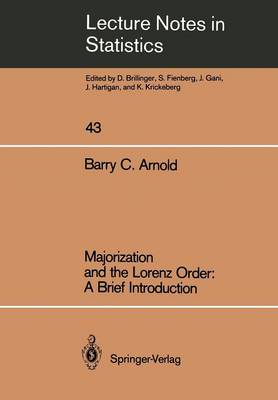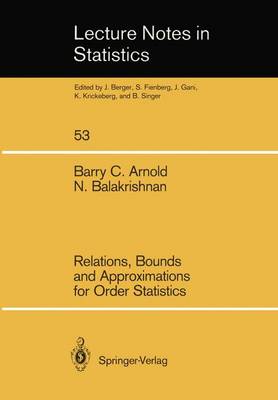Lecture Notes in Statistics
4 primary works
Book 43
Majorization and the Lorenz Order: A Brief Introduction
by Barry C. Arnold
Book 53
Relations, Bounds and Approximations for Order Statistics
by Barry C. Arnold and Narayanaswamy Balakrishnan
Book 73
Conditionally Specified Distributions
by Barry C. Arnold, Enrique Castillo, and J.M. Sarabia
Book 223
Finite Form Representations for Meijer G and Fox H Functions
by Carlos A Coelho and Barry C. Arnold
This book depicts a wide range of situations in which there exist finite form representations for the Meijer G and the Fox H functions. Accordingly, it will be of interest to researchers and graduate students who, when implementing likelihood ratio tests in multivariate analysis, would like to know if there exists an explicit manageable finite form for the distribution of the test statistics. In these cases, both the exact quantiles and the exact p-values of the likelihood ratio tests can be computed quickly and efficiently.
The test statistics in question range from common ones, such as those used to test e.g. the equality of means or the independence of blocks of variables in real or complex normally distributed random vectors; to far more elaborate tests on the structure of covariance matrices and equality of mean vectors. The book also provides computational modules in Mathematica (R), MAXIMA and R, which allow readers to easily implement, plot and compute the distributions of any of these statistics, or any other statistics that fit into the general paradigm described here.


